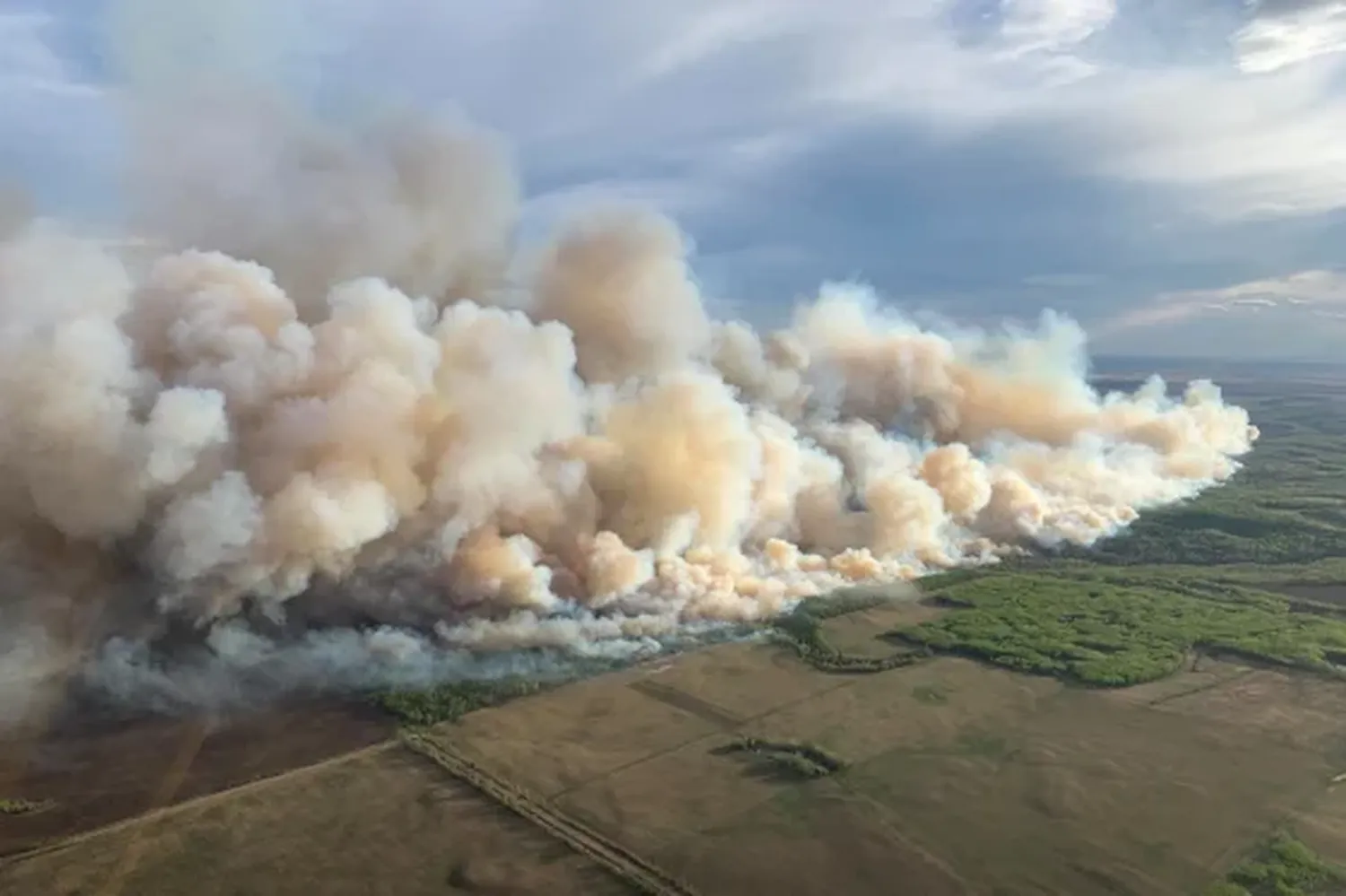Natural Disasters
Canadian Wildfires Trigger Air Quality Alerts Across Four U.S. States
As Canadian wildfires continue to rage, their impact is being felt far beyond the borders of Canada. Smoke from these fires has drifted south, leading to air quality alerts in four U.S. states: Minnesota, Montana, Wisconsin, and North Dakota. This transboundary haze has raised significant concerns about public health and environmental safety in these regions.
The wildfires, which have been burning through vast tracts of forest in Canada, have been fueled by unusually dry conditions and high temperatures, factors that experts link to climate change. As of now, over 100 active wildfires are reported, with many situated in the provinces of British Columbia and Alberta. The intensity of these fires has not only devastated local ecosystems and communities in Canada but also sent plumes of smoke across the border into the United States.
In Minnesota, the situation has become particularly dire. The state's Pollution Control Agency issued an air quality alert after the Air Quality Index (AQI) soared to levels considered "unhealthy" for all groups. Cities like Bemidji recorded AQI figures as high as 212, placing them among the worst globally for air quality at this time. Residents have been advised to stay indoors, especially those in sensitive groups including the elderly, children, and individuals with respiratory conditions.
Montana and North Dakota have also experienced similar conditions, with local authorities monitoring the situation closely. In Wisconsin, the Department of Natural Resources has been proactive in issuing warnings and health advisories, urging residents to limit outdoor activities and keep windows closed to avoid the inhalation of fine particulate matter, known as PM2.5. These particles are small enough to penetrate deep into the lungs and even enter the bloodstream, posing serious health risks.
The smoke from these wildfires contains a mix of gases and fine particles from burning trees and other plant materials. Health officials warn that exposure to this smoke can trigger a range of health problems, from burning eyes and a runny nose to chronic heart and lung diseases. There is also an increased risk of strokes, heart attacks, and asthma attacks.
The response to the smoke has been robust. In Minnesota, public health officials have set up clean air shelters where residents can find respite from the smoke. These shelters are equipped with air purifiers and provide a safe environment for those who do not have access to air-filtered buildings.
The economic impact of the smoke is also significant. Outdoor events have been canceled or postponed, and businesses, particularly those reliant on outdoor activities, have reported downturns. The persistent smoke has also affected local wildlife, with reports of disoriented animals and decreased air quality in natural habitats.
Looking forward, meteorologists predict that the smoke will continue to affect the U.S. states for some time. While cooler temperatures and potential rainfall might offer some respite, the long-term forecast remains uncertain. Experts warn that as long as the wildfires in Canada continue, smoke could remain a recurrent problem.
This situation highlights the broader implications of wildfires and the effects of climate change. As temperatures rise and droughts become more frequent, the frequency and intensity of wildfires are expected to increase, not just in Canada but globally. This calls for an international response, focusing on both firefighting efforts and strategies to mitigate climate change.
In conclusion, the Canadian wildfires have underscored the interconnected nature of environmental issues. Smoke knows no borders, and its impact on air quality and public health in the U.S. is a stark reminder of the need for comprehensive and cooperative approaches to environmental crises. As communities grapple with the immediate effects of the smoke, the larger challenge remains addressing the root causes of these increasingly frequent and intense wildfires.

